Data and information are the currency of modern business. Businesses large and small need a reliable database to help keep things organized and properly functioning.
This means more than just reliable hardware. To enjoy the full benefit of a database, it takes the best database platform — that’s whether a business manages their database in-house, houses it off-site, or even manages it through a third-party service.
BP’s Picks for Best Database Software for Small Businesses
- Best Overall: Oracle Database
- Best Free: PostgreSQL
- Most Versatile: Sisense
- Easiest to Use: Microsoft SQL Server
- Best Cloud-Based: Caspio
There are many different database software options to choose from. Many small businesses lack the IT infrastructure to devote much time researching the best business database platform.
We did the hard work for you. In this article, we explain the five best business database platforms. We also provide expert advice so you can choose the best database platform for your business, including tips and pointers from small-business owners just like you.
How to Choose Database Software

Because no two businesses are exactly the same, a database platform needs to be perfectly suited for the needs of the small business. Before telling you our picks for the best database platforms available, let’s begin with some advice from experienced business owners who went through the process of choosing the best database platform for their enterprise.
Here’s what they had to say…
What Are Your Expectations?
Lianne Sanders is a yoga instructor and content editor at Total Shape. She also manages a small yoga business class. At first, she was overwhelmed by all the options she encountered when shopping for a database platform for her many enterprises. To manage it all, she broke the process down into small steps.
The first step, she says, is to consider exactly what you need your platform to do and to adjust expectations accordingly. Doing so may require input from the team, she continues, so begin by asking yourself and your team how the data needs to be organized as well as exactly how the information needs to be stored and what security measures should be put in place.
“Once you come to terms with what you want your software to do, then you will be able to figure out what software specifications you will need to acquire,” she says.
A small business will also need to decide whether they’re best served by a database platform that is SQL-based or non-SQL based. Briefly, SQL platforms are best-suited for table-based data, such as research data or data-analysis, something like a traditional spreadsheet. Non-sql is best for storing and retrieving documents like invoices, among other examples of non-table-based data.
Patrick Smith is chief technology officer and editor-in-chief at Fire Stick Tricks. His website covers all things related to cord-cutting, especially Amazon Fire TV Stick. His site also helps users find the best streaming options while maintaining their online privacy using secure VPN services.
SQL database software is for relational databases, he says, whereas non-SQL databases are for non-relational databases.
“SQ-based software will require you to hire a technical individual to perform actions on the software,” Smith continues. Otherwise, a business will need to train someone on the team. This can typically be done in the matter of a few weeks, according to Smith, but it’s an investment in time and money.
“You can then compare database systems for their data integrity, performance, security, and ease of maintenance. Finally, you must see if there are any pricing plans and if you can afford them,” Smiths says.
How Easy Is the Software to Use?
The next step in the process is to ascertain how user-friendly the software is. Some businesses have a lot of database experience and available staff to get a database system up and running as well as a good deal of time available to keep it operating at peak efficiency. Most small businesses don’t have that luxury, so Antti Alatalo, founder and CEO of SmartWatches4U suggests choosing a program that’s intuitive and easy to use right out of the box.
“If after the first three days of implementing the program you’re still spending more than half the time trying to figure out how to use it than actually using it, then it’s not intuitive enough; move on to another program,” he says.
How the database will be hosted is also a crucial consideration. Chris Love, owner of Love2Dev, an online website development service, says hosting a machine on the premises is expensive “both in monthly costs and maintenance.” Cloud services, on the other hand, are very low cost, he continues, “as you only pay for what you use.”
“Often that is a few dollars a month,” he continues. Cloud-based database platforms also scale nicely compared to the physical limitations of a classic server, “so no worries when it is time to expand,” Love says, adding that you can just change a setting in your service and you have more power.
Ask for Advice
Before choosing a program, it’s important to ask around. What programs do your colleagues use? What does it do, and why did they choose it? How easy was it to use and how easy is it to maintain? Look beyond the product description to get some real-life testimonials from real small-business owners just like you.
Milosz Krasinski, managing director at the web consulting company Chilli Fruit, says the best first step at this stage is to make a list of your desired features. “This will help you to narrow down the options,” he says.
If you have specific needs—accounting, for example—it’s always best to choose a niche software to ensure that you’re getting the tools that you need, Krasinski says. Then you’ll be ready to ask around to find out what other people are using and what they think of it, he continues.
Last, Bobbie Franklin, owner and operator of Frank Creative, a website for real estate marketing services, cautions that no matter what database platform a small-business owner chooses, they should always read the fine print.
“Many companies will offer a free trial so that you can test out all the features of a product,” she says. “However, I recently had an encounter with a predatory company that only allows you to test the full features of the software behind a nonrefundable paywall. Of course, they did their best to obscure this fact while you went through the process of signing up.”
Even the savviest person can fall victim to one of these companies, Franklin continues, so read the fine print carefully and determine which features are must-haves before paying.
“There are many companies and start-ups offering their own version of database software, so do your best to be discerning throughout the entire process of research and when you make the final decision,” Franklin says.
What Does Database Software Cost?
The deciding factor for many people in the market for a new database platform, though, is cost. Database software can cost a little or a lot (see our pick for the best free database software). But like anything, when it comes to database software, you get what you pay for.
Packages can cost as little $12 dollars per month per user to upwards of $1,000 a month per user for more elaborate solutions.
Best Overall: Oracle Database
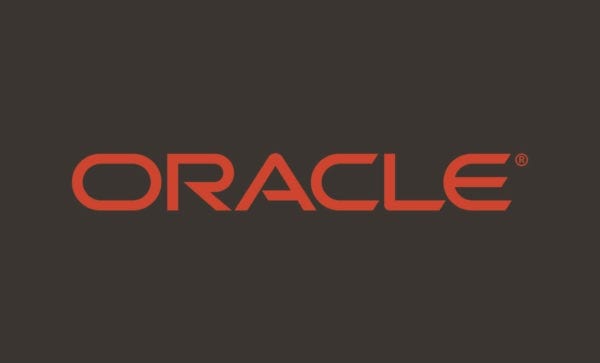
With an overwhelming response, Oracle Database came in first in our ranking of the best database software in our ranking. Oracle comes recommended to Business Pundit by Lianne Sanders of Total Shape. She calls it a one-stop database solution fulfilling all her needs. Offering in-memory, NoSql, and MySql, “it is fully equipped,” Sanders tells Business Pundit in an email, “with online applications, including customer relationship management and supply chain management,” she adds. Oracle is not only powerful, she continues, it’s simple and easy to use.
Dan Bailey, president of Wiki Lawn Care, also recommends Oracle. “In my experience, it’s really good out of the box,” he says. Minimal configuration is required to make the most of the software right away, Bailey says, and the software scales well, “which has been a problem for us in the past,” Bailey explains. Some database solutions just don’t hold up to the scaling test. But Oracle “is a good, sturdy database software that does everything we need it to do,” Bailey says.
Technical Specifications
Choosing Oracle database products will give a small business access to cost-optimized and high-performance versions of the Oracle Database.
Oracle Database is a converged, multimode database management system. As previously mentioned, Oracle offers in-memory, NoSQL, and MySQL database options. There’s also Oracle Autonomous Database, which is available on premises through the OracleCloud@Customer. Another option for customers choosing the Autonomous Database is the Oracle Cloud Infrastructure, or public cloud, if that’s what the customer prefers.
Otherwise, Oracle allows for highly scalable applications with no data-type restrictions, including relational, graph, structured, and unstructured. Users can also run analytics on all data types using Oracle’s single converged database engine. The database engine accommodates flexible JSON documents and even blockchain for fraud prevention. Oracle also allows for machine learning algorithms inside the database.
What Makes it the Best?
Pluggable databases available through Oracle really help with consolidation, according to user reviews. Business Pundit was also encouraged by reports that both table and table partitions can be easily restored using RMAN. Easy online migration of a table partition or subpartition is also possible using Oracle.
For non-technical readers, what’s important to know is that table partitions help divide large datasets into smaller, manageable parts, and these partitions can sometimes be lost during data migration. Unique to Oracle, RMAN is a data recovery manager helpful shouldt data, table partitions, or subpartitions be lost during data migration.
Other positive reports from experienced database experts indicate that compliance and security are additional strong points with Oracle and without much configuration required. Additionally, both on-prem (database administrator speak for on-premises) and cloud deployments work well. Multiple reports also confirm that Oracle is a great choice for large data sets and performance numbers, while SQL queries are quick and convenient.
Generally speaking, Oracle is the right choice for a business faced with a large database and intense workloads or for an application when reliability, security and scalability are particularly important. Oracle is particularly useful in e-commerce applications, according to experts. There’s also ACID compliance, which, users say, helps to guarantee performance and data consistency.
Oracle Active Data Guard is also worth mentioning. This feature helps keep open the standby database for read operations. In addition, certain versions like Oracle 19c keeps DML redirection on standby as a database. This, we learned, helps with reports that need temporary tables. We were also encouraged that the PL/SQL is an efficient way to develop data-intensive processes.
That creates the ability to interact with data without having to transfer it to an app server, experts say.
What Could Be Better?
Business Pundit also heard from users what they don’t like about Oracle.
Chris Love from Love2Dev says, “SQL Server and Oracle are the relational leaders and have decades of use behind them, but they are very expensive.”
Dan Bailey echoes these concerns about price. “I don’t love the pricing structure,” he says. “You can definitely get cheaper plans from competitors.” Tech support is also not that responsive. “We usually have to figure things out for ourselves,” Bailey says.
Additional comments say the Data Guard setup needs to be simplified, and troubleshooting is too complex for many users. Best-practice documents and deployment scenarios for running Oracle Database on non-Oracle cloud platforms are also lacking related to running Oracle Database on Google Cloud and Microsoft Azure, just as one example.
The process of integrating and automating SQL tuning could also be improved, according to one user review, and unstructured data, like XML, is hard to use. And while real application clusters do exist, they’re difficult to set up and maintain. Many features also require licensing, available both in options and packs, at an additional cost.
Best Free: PostgreSQL
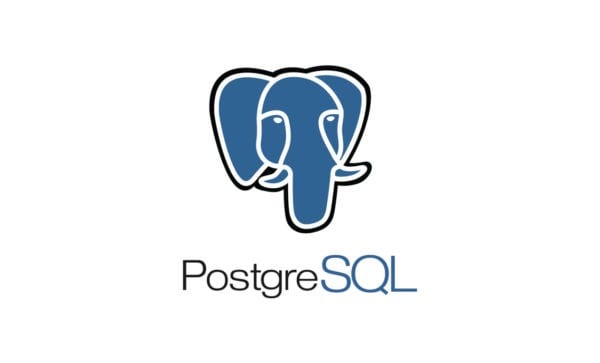
Cost is always a concern in the world of small business. There are free database options to choose from. When Business Pundit queried small-business owners and database experts about their favorite free database software, the overwhelming response was that PostgreSQL is the best there is.
PostgreSQL is open source and free, and Bram Jansen, chief editor of vpnAlert, calls it a bit more proficient than MySQL. He also says that it has been geared toward business-use cases—a definite advantage for small-business owners
“It is not quite in the same class as the best commercial RDBMS systems,” he cautions, “but really close.” Businesses that choose PostgreSQL will be able to use it for a long time before outgrowing it, he adds.
Milosz Krasinski from Chilli Fruit says his company uses post PostgreSQL for two primary reasons: It’s secure and it can handle huge amounts of data without many problems. “It can also deal with complex queries and is supported by tons of platforms like Amazon Web Services and Azure,” he explains in an email.
In addition, PostgreSQL uses SQL language to interact with data, says Ryan Maxwell, chief technology officer at FirstRate Data, a financial data provider. For that reason, finding developers or administrators to build or maintain the database will be cheap and relatively easy, he continues.
Technical Specifications
An open source, object-relational database system, PostgreSQL has been in development for nearly three decades, and some say it’s best used as a relational database in micro-services and serverless systems. It also holds nonessential data such as recreatable models. And since queries are very similar to other relational databases, PostgreSQL is easy to adapt for new users.
PostgreSQL also earns high marks for speed, high-volume processing, and automated data distribution. Other areas where PostgreSQL excels include multiple data types and structures, tunable structures, and support for embedding. We also like how well PostgreSQL handles cloud and hybrid deployment, security, and programmable HTAP.
There are too many PostgreSQL features to cover here. But for starters, data-type features found in PostgreSQL include primitives like integer, numeric, string, and boolean, as well as structured data like date and time, array, range, and UUID.
What’s important to know about data type in non-technical terms is how it relates to the type of data that should be stored, and how much memory to devote to the data. Data structure, on the other hand, refers to how the data is organized within the memory, and the logic by which the data is accessed. These are pretty high-level concepts, but trust us, they will be meaningful to a database administrator.
Document data supported include JSON and JSONB, XM, and key-value, or Hstore. Data integrity is unique, not null, and there are primary keys, foreign keys, and exclusion constraints. There are both explicit and advisory locks. And since security is often a significant concern for those choosing database software, PostgreSQL offers authentication like GSSAPI, SSPI, LDAP, SCRAM-SHA-256, and certificate, among others.
There’s also a robust access-control system, with both column and row-level security. There’s also multi-factor authentication with certificates plus one additional method.
What Makes it the Best?
A preponderance of user reviews call PostgreSQL among the best open-source database management solutions on the market. After conducting our own research, we agree. It’s fast, especially when it comes to read-time, with good data-processing, and there is a deep and useful set of functionalities for small-business applications.
The platform is generally recommended for data analytics as well as scenarios that rely heavily on computing. Queries are very easy to execute. They can even be executed when the database is not connected to a server. The speed of the query, in fact, is actually higher in that case, and it’s also the best way to avoid errors.
There’s a robust range of tools to work with, including both import and export. Users can also build their own custom modules, which can be integrated directly into the server. Once there, users can write their own applications around them.
When put in a head-to-head against a Linux-based gateway solution that can insert more than 1,000 rows of data per second, PostgreSQL outperformed MySQL when inserting concurrent data from multiple instances, according to reports.
In addition, PostgreSQL easily performs operations like procedure, cursor, and normal table creation and modification using queries. Schemas can also be listed by name. This is performed by connecting a single schema against the database.
What Could Be Better?
One drawback that anyone choosing PostgreSQL should be aware of is that there is no compression, resulting in more weight on a hard drive and slower performance. In addition, database systems that can keep data compressed in memory store more data in the fast access cache, which can improve performance. PostgreSQL has nothing to offer in this area, according to reports.
Unlike most analytics databases, tables are also stored by rows rather than columns. Storing data in rows helps with data compression. Since PostgreSQL doesn’t provide columnar tables, large tables need to be parsed into two or more smaller tables to increase speed. There’s also not much machine learning included with PostgreSQL, and many who choose the system often end up adding an external machine learning library.
Since PostgreSQL is a generalist database, it won’t guess you have analytics settings. Experts also caution that the query optimizer uses table statistics to form the fastest execution plan. That makes it vitally important those statistics are correct, and sometimes it won’t work right after a bulk insert. To solve this, it’s sometimes best to run queries manually instead, according to feedback from expert users.
Generally speaking, though, these limitations make PostgreSQL a good choice for datasets of up to about 100 gigabytes. Anything larger, and there are better alternatives. Migration is made easy, however, since Amazon Redshift and Greemplum are derived from PostgreSQL, just as two examples. That means small businesses looking to grow can feel confident that the system is scalable to their needs.
Most Versatile: Sisense
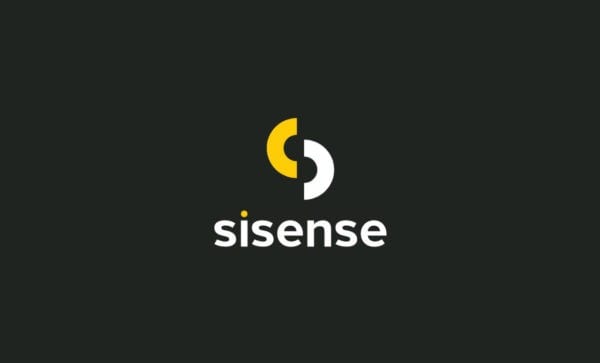
Versatility is an important characteristic of any database platform, and our research shows Sisense is the most versatile database system in our ranking. Sharon van Donkelaar, chief marketing officer at Expandi.io, a LinkedIn automation tool, has experience with Sisense.
She says it takes small-business data tracking to the next level and provides an advanced tool to manage big data through both analytics and reports.
“Since small businesses have functions scattered across various datasets,” she adds, “Sisense is able to intelligently convert the data into a more accessible format.” The AI goes further than that, using the data to predict business trends and to visually display the data making it easy to interpret.
“It does this by grouping the data from disparate sources into one single integrated database for better performance,” van Donkelaar continues.
In addition, Sisense allows users to slice data any way they wish, running it through various built-in filters and analytic tools.
“Sisense also uses Crowd Accelerated BI technology that enables data synchronization with users inside and outside local networks,” allowing seamless cooperation in real time for teams across the entire company. BI stands for business intelligence, and what’s cool about Crowd Accelerated Bl technology is it actually gains speed with additional users instead of slowing down. The software can also be installed on-site or completely hosted in the cloud for extra security, according to van Donkelaar.
Technical specifications
Sisense is an API-first cloud technology. This means users can easily blend data and make analytic apps. Utilizing all the benefits of a modern containerized microservices architecture and running Linux OS, Sisense is the preferred choice for both Cloud and Enterprise deployment, we learned.
This also contributes to the high marks the platform earns for versatility. Users can also build ease-of-use and self-service BI, with all the customization, scalability, security expected from enterprise-grade applications.
DevOps agility is also available through Sisense as well as modern cloud-native architecture. This allows for analytic deployments to be seamlessly integrated into both DevOps processes — processes that combine software development and IT operations — and infrastructure-as-code. This makes it easy and fast to not only scale nodes but also provision and upgrade, according to feedback.
Linux OS also offers many cost advantages. Many of those savings are realized through Sisense by automation, reduced overall TCO of deployments, an efficient use of resources, and maintenance. TCO, or total cost of ownership, can be thought of as the cost of the platform, plus the investment required to get it up and running. Sisnese users also benefit from Helm. Helm Charts manage complex Kubernetes applications. There’s also a robust selection of APIs.
Further technical specifications to consider include the fact Sisense can be deployed on any cloud, on-premises, or in the managed cloud. That includes both single and multi-node clusters. Cloud-native architecture also makes it easier to integrate Sisense with cloud services like Google Cloud, AWS, and Azure, among many others.
What Makes it the Best?
According to experienced users, Sisense is easy to use with intuitive UI and outstanding support. There’s also the ability to import data from different sources, with an interface for managing data imports and creating custom dashboards.
Once configured, the monitoring tools in Sisen are excellent, experts say, providing alerts when builds fail. Time and time again, Sisense customer support is exemplary, according to reports. One expert who’s been using the product for about three years says recent releases have stabilized the product even more.
Other notable trends in user reviews say development and debugging are facilitated through feature-rich dashboards and widgets. Elasticube is easily developed, and so too are the widgets, which are most often drag and drop. There’s also web-enabled development and administration.
In addition to ease of development, the speed at which Sisense delivers BI reports is also notable, users say. Data visualization is “beautiful,” according to reports, which helps ensure clear and cohesive data reports, such as pulses, regression forecasting, and predictive insights.
In general, users call Sisense an excellent full-stack solution that combines many different data sets into dashboards that are easily consumed.
One small business built its Sisense database up to more than 200 users, developers, and administrators, and no matter what the users background may be—from AP and IT to sales or finance—Sisense is user friendly.
What Could Be Better?
Nothing is perfect, though, and there are a few negative trends in Sisense user feedback that an informed consumer should be aware of. Chiefly, more advanced analytic capabilities should be integrated into the product, and some experts say that if they could start over with Sisense, they would have deployed in the cloud rather than on the premises.
Also, if a developer heads down the wrong track in development, Sisense lacks any kind of warning system, letting them build something incorrectly without much notice. There is a learning curve with Sisense, and it does have its quirks, according to the experts.
Furthermore, upgrades have a nasty tendency to break something else, such as pulse alerts. Fixing these issues requires troubleshooting and tech support, according to user reviews.
Another nuisance is that widgets stop working from time to time, requiring the plug-ins to be restarted. Also, some users wish that Sisense had import and export capabilities that could be customized to user preferences. This would allow for separate-environment upgrades with imported user preferences. Then the load balancer could be pointed to the upgraded environment.
Since Sisense is not currently able to perform these tasks, options are limited and administrators are forced to upgrade directly on production servers. Some experts also say that if they had it to do over again, they would choose a system that allowed for more than one default password to be saved per dashboard.
Easiest to Use: Microsoft SQL Server
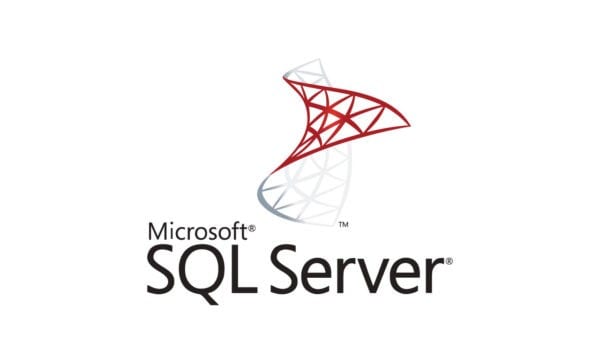
Since many small businesses lack an IT department, or even a dedicated database administrator, ease-of-use is particularly important when choosing a database system.
Our pick for the easiest business database to use is the Microsoft SQL Server. The primary advantage of a Microsoft SQL server is the tools, says Ryan Maxwell, chief technology officer at FirstRate Data. FirstRate Data provides financial data for a broad -range of applications.
“Other SQL databases, such as MySQL or PostgreSQL, are primarily intended for technical users who will use a command-line interface to interact with the database, Maxwell tells Business Pundit in an email.
Microsoft SQL, on the other hand, uses SSMS, as the primary application to interact with the database and perform tasks such as backup and data editing. SSMS is a software application used for configuring, managing, and administering components within Microsoft SQL Servers
“SSMS is very stable and easy to use,” Maxwell continues, and it ships free with that SQL Server. It is developed and maintained by Microsoft, he continues. Although. Microsoft SQL Server is a bit expensive for a small business, Maxwell recommends the SQL Server Express edition to cut costs.
“The free SQL Server Express edition has easily enough power,” he says. The primary limitation of the Express edition is that RAM memory is limited to 1 gigabyte, “which a small-business database rarely exceeds,” Maxwell explains.
Dusan Stanar, founder and CEO of VSS Monitoring also uses Microsoft SQL on the Azure platform. He had this to say about the experience: “MySQL has been one of Microsoft’s most valuable gifts to the open-source community. And although MySQL is increasingly in competition with other database types like PostgreSQL, he continues, as well as non-relational databases such as NoSQL, Microsoft can provide for each of these and more with its cloud-based Azure offering. The Microsoft Azure platform is already an industry-leading service, but databases and database management remain core to that, he says.
Technical Specifications
Strengths of the Microsoft SQL server include its ability to analyze a broad range of data types, including relational and non-relational as well as structured and unstructured data. Users can also choose their own language and platform with Microsoft, and the support is open source. You can simply run it on Windows or Linux containers with Kubernetes support.
Microsoft SQL server is also industry leading in terms of performance. It’s scalable and stable, with great response time. That’s all achieved without making any app changes and while mission-critical applications like data warehouses and data lakes are kept available.
With Microsoft SQL, users enjoy big data clusters. This helps manage the big-data environment. Users also enjoy deeply integrated analytic tools that are fully supported by Microsoft. These tools include the Hadoop Distributed File System (HDFS) and Apache Spark. Overall, entire teams can rest on Microsoft SQL because it’s capable of housing large data tables, and its access tools (SSMS) are all very familiar and intuitive, according to users.
Automation is made possible with graphical tools and wizards meant for building and debugging packages like SSIS packages, which are or groupings of workflow functions such as FTP operations, executing SQL statements, and sending email messages, among many others functions. Reporting is conducted through Microsoft’s server-based software system, SSRS.
What Makes it the Best?
User feedback about the Microsoft SQL system indicates it’s capable of being the primary database for all client-related data within an organization. Built-in features and options are easy to understand, according to reports, and the UI is intuitive to use. Among the many things users like about Microsoft SQL is the job scheduler, used to automate jobs across all the databases.
Other notable features include the Always On availability group, log shipping, and replication. These features keep data available to clients around the clock, with minimum downtime and maximum throughput, users say.
In addition, Microsoft reports are generated in a timely manner, and other in-built features like stored procedures and functions, and triggers improve server performance. There is also the SQL profiler and tuning adviser to analyze data and other large queries while making new planes to improve speed and performance, according to experts.
Other great features mentioned by those who’ve used the database software include the ability to instantly remove both data columns and delimited values. Otherwise, feedback indicates that the support from Microsoft is strong in terms of service packs, and SQL also works well on the Azure platform, improving both speed and responsiveness.
Overall, the SQL server is a reliable tool for storing and manipulating client data, according to those close who’ve used it.
What Could Be Better?
To present a clear picture of not just the strengths but also the weaknesses of the Microsoft SQL server, we found out what experts didn’t like about the database system as well as what they like. Dusan Stanar of VSS Monitoring tells Business Pundit that some users may find the options included in the platform overwhelming, particularly with Azure. The pricing is also dependent upon the actual Azure services users subscribe to, so getting a clear idea of total cost is challenging.
Estimates are available, though, for introductory offers, “to help ease new users into the Azure ecosystem,” Stanar continues.
Another thing about the MySQL experience that some users caution about is the learning curve. It takes time to understand all the features and topics offered by the system. There are also no built-in data visualization options available, but there are third-party tools to help take care of that. To do so, however, the data has to be copy and pasted, and that function is limited, according to expert users.
Other feedback about Microsoft SQL recommends users move query logic on slow applications into stored procedures and views for improved performance. Others mention that partitioning is limited with Microsoft SQL server, especially compared to other products. Automatic migrations are also difficult.
Some say if they had to do it over again, they’d use the .NET framework when setting up the system — especially if a business has large amounts of data to manage. Across the board, though, cost came up time and time again as a deciding and prohibitive factor for many experienced users, especially in the executive suite.
Best Cloud-Based: Caspio
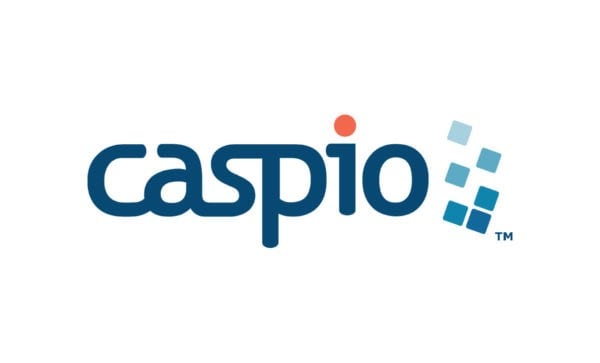
A cloud-based database system is often the best choice for small businesses, because working in the cloud saves both space and money. Our choice for the best cloud-based database system for small business is Caspio. Antti Alatalo, CEO of SmartWatches4U, a company that reviews and compares the latest smartwatches, explains why Caspio was the right choice for his company.
“As someone who writes smartwatch reviews,” he tells Business Pundit in an email, “I have tons of data to maintain and monitor,” including views, comments, affiliate link click-throughs, returning visits, average site-visit time, and more. Caspio makes it easy to sort out this data and display it in an easy-to-read format for both Alatalo and his team. And best of all, when it comes to Caspio, there’s no downloading required. Instead, “I can just sign in and get started,” Alatalo explains.
In addition, workflows can be customized without having to write complex code. You can just embed the app on a website, and the program runs in the background.
“I’m not saying Caspio is the right database program for every company,” Alatalo continues, adding there are dozens of viable programs to choose from, but when shopping for database software, Alatalo’s advice is to seek something that’s intuitive to use right out of the box. His company found its solution with Caspio.
“If after the first three days of implementing the program you’re still spending more than half the time trying to figure out how to use it than actually using it, then it’s not intuitive enough; move on to another program,” he says.
Technical Specifications
Small-business users should be aware that Caspio is a low-code platform, meaning rather than hand-coded computer programming, Caspio facilitates the development environment for application creation through graphical user interfaces and configuration.
In other words, online application databases can be built with Caspio without any coding at all. This is an additional reason Caspio is a good choice for small businesses with limited tech experience.
Through the easy-to-use visual application builder, Caspio also helps small-business owners create custom web forms and searchable databases as well as multiuser portals, interactive dashboards, and automated workflow, among many other cloud applications.
Development is particularly fast with Caspio’s point-and-click tools, and database triggers can be created and scheduled to automate tasks and streamline a small-business workflow. And just because a business is small doesn’t mean the team isn’t big. Caspio has no user limit.
Leveraging the power of the Microsoft SQL server in a more user-friendly environment, Caspio is also notable for its security controls, such as authentication, data encryption, and single sign-on, or SSO, integration, among others. SSO allows users to securely authenticate with several applications and websites with just one set of credentials.
If your business is planning on growing, Caspio is infinitely scalable on Amazon Web Services, which also gives small-business owners that added advantages of cloud capabilities.
What Makes it the Best?
While evaluating user feedback on Caspio, Business Pundit heard again and again that it excels in the graphical interface and user experience.
Data can be color coordinated, which helps keep things organized, according to one expert review, and there’s also data-field matching. Best of all, these database functions are aligned in a single dashboard. Users are also unlimited, and it’s easy to copy data from Excel to a Caspio platform, according to those experienced with the platform.
In particular, Business Pundit liked to hear that after all the data is entered, search forms are easy to set up using Caspio. Prior evaluations and audits submitted by a specific user or by the team in general are also easy to track.
Additional user comments echo how easy Caspio is to use for those with no coding or programming experiences. But just because the forms are easy to create, it doesn’t mean they can’t be complex, adds another expert. You can tie custom forms together, for example, with backend forms to manage data once it’s collected.
All this combined helps users turn jobs that might have taken a couple weeks and complete them within a matter of hours. Customer support from Caspio is also strong, with short wait times. Updates are released regularly, and there are different levels of security to purchase at a variety of price points depending on the needs of the user. There are also many ways to deploy applications throughout a website using iFrame, according to reviews.
What Could Be Better?
Drawbacks associated with Caspio include some issues with misaligned data fields, but support quickly fixed this issue. And despite everything Caspio offers small businesses, it is not compatible with WordPress. Some tried to fix this with mixed results through plug-ins and APIs.
There are also some limits to what falls under the parameters of a free version. Exceed those limits, and users are forced to upgrade to paid access. There is also no way to suggest edits through a form link. Instead, the edit has to go to the individual within the organization that is responsible for publishing the link.
In addition, Caspio lacks the flexibility to pass parameters from one database to another, according to reports from an experienced user.
Additional issues were encountered when creating drop-down values in a table. Specifically, issues with formatting once the data was exported. And unlike other software, there are no auto-generated emails in Caspio that alert an administrator once a task like an audit is complete. Instead, the administrator has to log-in to check, which can be time consuming and inconvenient.
Conclusion
If you’re still not sure whether or not your company needs a database platform, here’s a quick look at some advantages of having one:
- Reduced data redundancy and fewer errors when updating as well as improved consistency
- Reduced time spent on data entry as well as storage and retrieval costs
- Better data access allowed by host and query languages
- Better data integrity and improved data security
- The freedom to develop new applications programs
Interested in other ways you can help jumpstart your small business operations? Check out some of our other Business Pundit rankings on products that help you take the next steps toward business success:

